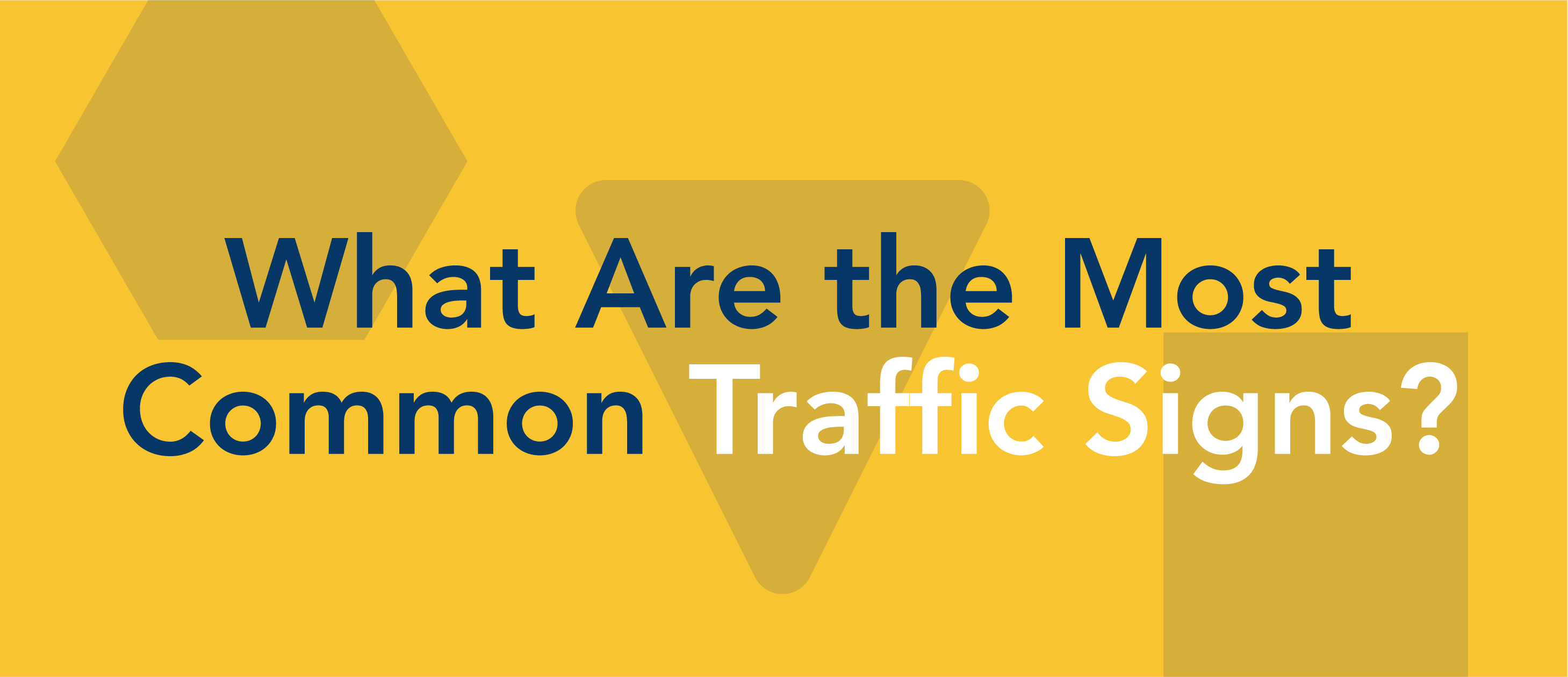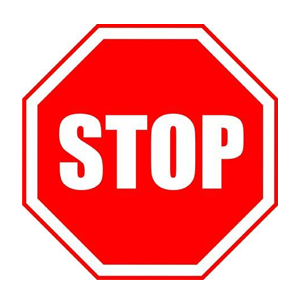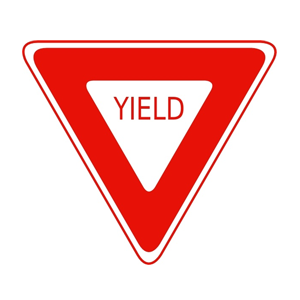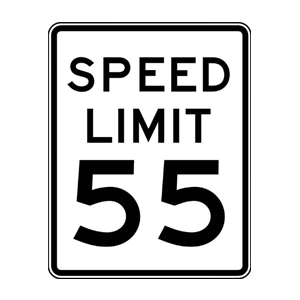
Traffic signs function similarly to traffic signals as they control the flow of traffic and fulfill fundamental needs of drivers and pedestrians. Generally, traffic signs aim to:
- Grab driver and pedestrian attention
- Convey a clear, simple meaning
- Command respect from road users
- Give adequate time for the proper response (yield, stop etc.)
Stop Signs
 This eight-sided red sign means STOP. You must make a complete stop at the stop line every time you approach a stop sign. If there is no stop line, stop before entering the crosswalk. If there is no crosswalk, stop before entering the intersection. Always yield the right-of-way to pedestrians and approaching traffic. If it is an all-way STOP sign, wait your turn. If the STOP sign is hand-held, stop until an authorized person, such as a school guard or construction zone flagger, signals that it is safe to proceed.
This eight-sided red sign means STOP. You must make a complete stop at the stop line every time you approach a stop sign. If there is no stop line, stop before entering the crosswalk. If there is no crosswalk, stop before entering the intersection. Always yield the right-of-way to pedestrians and approaching traffic. If it is an all-way STOP sign, wait your turn. If the STOP sign is hand-held, stop until an authorized person, such as a school guard or construction zone flagger, signals that it is safe to proceed.
Yield Signs
 Yield signs are three-sided red triangular signs that require you give the right-of-way to all vehicles and pedestrians near you. Prior to 1971 yield signs were yellow
Yield signs are three-sided red triangular signs that require you give the right-of-way to all vehicles and pedestrians near you. Prior to 1971 yield signs were yellow
When approaching a yield sign you should slow down to a safe speed and stop if necessary. When stopping, do so at a marked crosswalk or before entering the intersection. You also may see ‘YIELD’ signs on expressway ramps. These type of signs are posted when there is no extra lane for drivers to speed up to or merge with into expressway traffic.
Speed Limit Signs
 Posted regulatory signs (i.e., speed limits) are black and white and tell you what you can and can’t do on the road. Some signs show maximum and minimum speed limits for all types of vehicles on freeways and limited access highways. In construction and maintenance zones, posted speeds legally reduce the speed limit on that portion of the highway. Unless necessary for safety, driving slower than the minimum posted speed limit hazardous and illegal.
Posted regulatory signs (i.e., speed limits) are black and white and tell you what you can and can’t do on the road. Some signs show maximum and minimum speed limits for all types of vehicles on freeways and limited access highways. In construction and maintenance zones, posted speeds legally reduce the speed limit on that portion of the highway. Unless necessary for safety, driving slower than the minimum posted speed limit hazardous and illegal.
Helpful Tips for Analyzing Right-of-Way Situations:
- Even if you legally have the right of way, be ready to yield to others who are driving aggressively.
- Even if you have the right of way, continue scanning even at controlled intersections.
- At intersections, be certain to communicate your intentions. Don’t be fooled by eye
contact. Be ready to slow or stop.
Traffic signs were created to keep drivers and pedestrians safe. Find your state’s driver handbook online and jog your memory about what each type of road sign means or take a Top Driver online refresher course. You can also read more about the common colors of traffic signs by reading “Black, Yellow, Green, Blue, Orange, Brown: Know What Each Type Of Road Sign Means.”